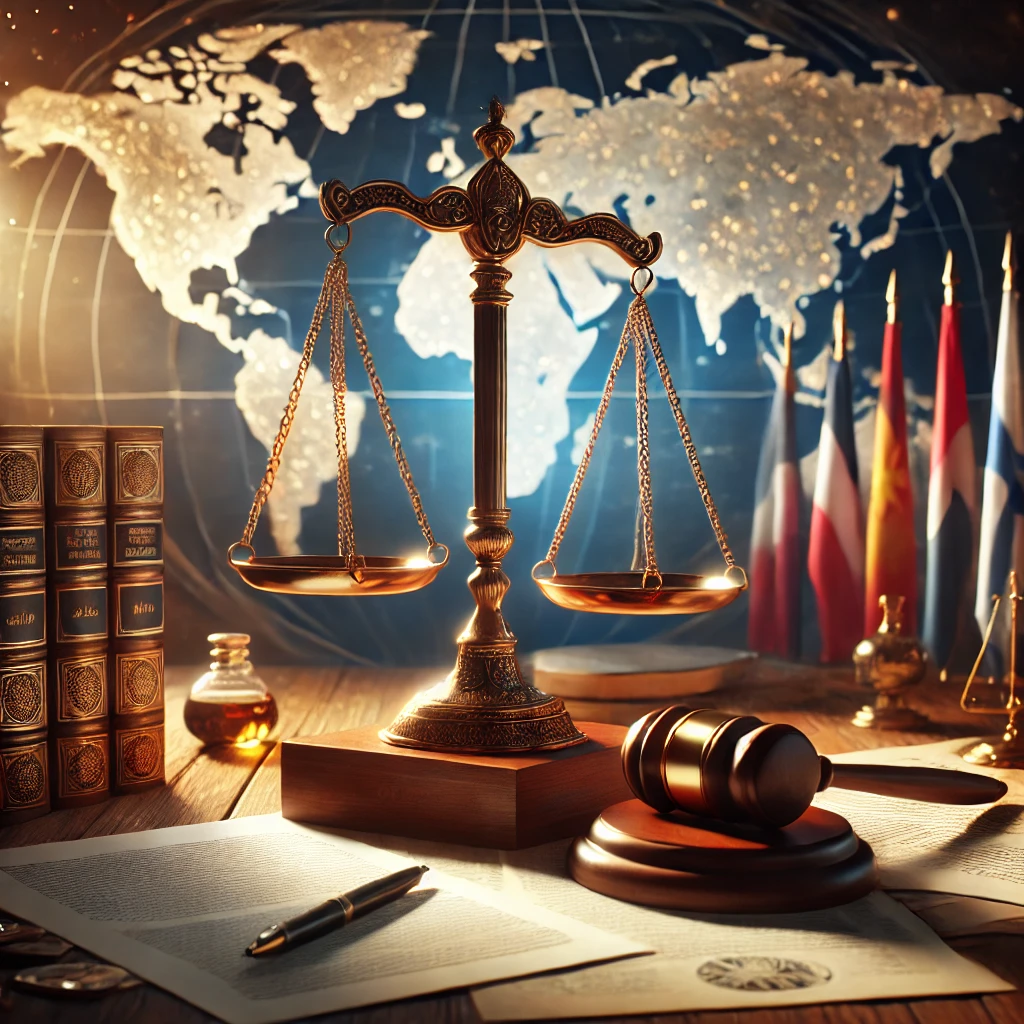Arms control is typically exercised through the use of diplomacy which seeks to impose such limitations upon consenting participants through international treaties and agreements, although it may also comprise efforts by a nation or group of nations to enforce limitations upon a non-consenting country.
Arms control refers to international agreements and frameworks designed to regulate the production, proliferation, and use of weapons, particularly those with mass destruction capabilities. Its primary aim is to enhance global security, prevent conflicts, and promote disarmament by imposing limitations on weapons development and ensuring compliance through treaties and monitoring mechanisms.
Key Objectives of Arms Control Law
- Prevention of Proliferation:
- Control the spread of nuclear, biological, chemical, and conventional weapons.
- Prevent non-state actors and terrorist groups from acquiring weapons.
- Promotion of Disarmament:
- Encourage states to reduce or eliminate specific categories of weapons.
- Enhance trust and stability among nations.
- Protection of Civilians:
- Limit the development and use of weapons that cause indiscriminate harm.
- Ensure compliance with international humanitarian laws.
- Global Security and Stability:
- Reduce the risk of armed conflicts.
- Mitigate the chances of catastrophic events, such as nuclear wars.
Key International Treaties and Agreements
- Nuclear Non-Proliferation Treaty (NPT) (1968):
- Prevents the spread of nuclear weapons.
- Promotes peaceful use of nuclear energy.
- Encourages nuclear disarmament.
- Comprehensive Nuclear-Test-Ban Treaty (CTBT) (1996):
- Prohibits all nuclear explosions for military or civilian purposes.
- Not yet fully ratified, but widely adhered to.
- Chemical Weapons Convention (CWC) (1997):
- Bans the development, production, stockpiling, and use of chemical weapons.
- Establishes the Organisation for the Prohibition of Chemical Weapons (OPCW) for monitoring compliance.
- Biological Weapons Convention (BWC) (1975):
- Prohibits the development, production, and stockpiling of biological and toxin weapons.
- Lacks a verification mechanism but relies on mutual trust and reporting.
- Arms Trade Treaty (ATT) (2014):
- Regulates the international trade of conventional weapons.
- Aims to reduce illegal arms trade and ensure that weapons do not contribute to human rights abuses.
- Anti-Personnel Mine Ban Convention (Ottawa Treaty) (1997):
- Bans the use, production, stockpiling, and transfer of anti-personnel mines.
- Seeks to assist mine victims and clear mined areas.
- New START Treaty (2011):
- Bilateral treaty between the United States and Russia to limit strategic nuclear weapons.
- Focuses on reducing deployed warheads and delivery systems.
Challenges in Arms Control Law
- Non-Compliance:
- States may secretly develop prohibited weapons or fail to adhere to treaty obligations.
- Verification and Enforcement:
- Ensuring compliance often requires intrusive inspections and robust mechanisms, which are sometimes resisted by states.
- Technological Advancements:
- Emerging technologies like artificial intelligence and cyber weapons are not yet comprehensively covered by existing treaties.
- Non-State Actors:
- Arms control treaties primarily focus on state actors, leaving gaps in addressing threats posed by terrorist groups or private entities.
- Political and Geopolitical Tensions:
- Rivalries and mistrust among nations hinder effective negotiations and implementation of arms control agreements.
Case Studies in Arms Control
- Iran Nuclear Deal (JCPOA):
- Aimed to limit Iran’s nuclear program in exchange for sanctions relief.
- Faced challenges due to U.S. withdrawal and regional geopolitical tensions.
- North Korea:
- Persistent international efforts to denuclearize the Korean Peninsula have been met with limited success due to North Korea’s non-compliance and strategic interests.
- Chemical Weapons Use in Syria:
- Allegations of chemical weapons use in the Syrian civil war highlighted gaps in enforcement under the CWC.
Future Directions
- Inclusion of Emerging Technologies:
- Expanding the scope of arms control treaties to address autonomous weapons, cyber warfare, and space-based weapons.
- Strengthening Multilateral Cooperation:
- Enhancing the role of international organizations like the United Nations and regional bodies to mediate and monitor arms control agreements.
- Public Awareness and Advocacy:
- Engaging civil society and non-governmental organizations to push for stricter arms control measures.
- Enhancing Verification Mechanisms:
- Developing advanced technologies for monitoring and verification to ensure compliance.
Conclusion
The international law of arms control is a cornerstone of global peace and security. While challenges persist, ongoing efforts to strengthen treaties, enhance compliance, and adapt to new threats reflect the international community’s commitment to mitigating the dangers of armed conflict and promoting a safer world. Effective arms control requires collaboration, innovation, and unwavering dedication to the principles of disarmament and peace










